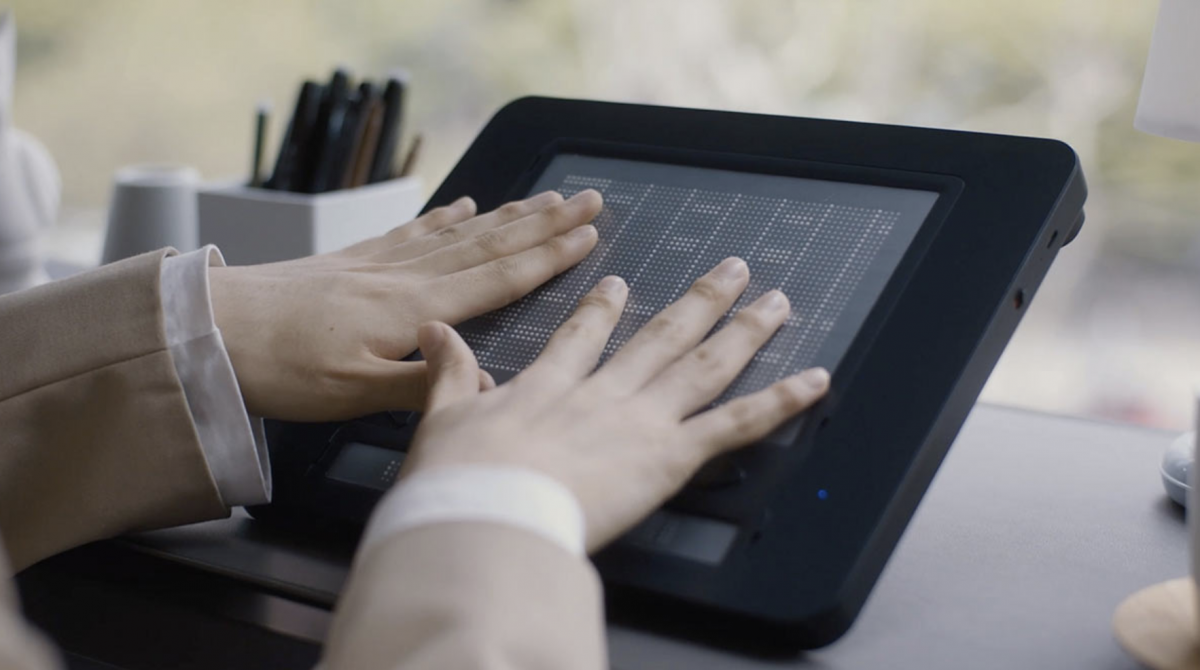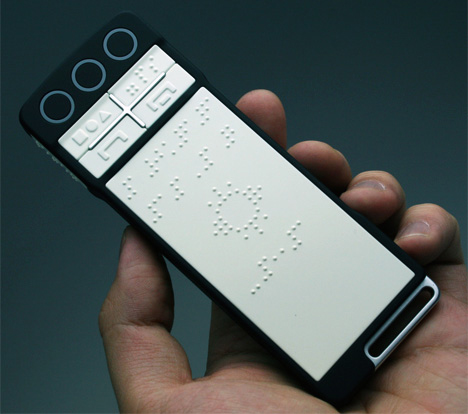Speech-to-Text Devices for Low Vision: Enhancing Ease of Use
Speech-to-Text Devices for Low Vision: Enhancing Ease of Use
Blog Article
A Guide to Life-altering Assistive Modern Technology for the Blind and Aesthetically Damaged
The advancement of assistive technology has introduced a transformative age for people that are blind or aesthetically damaged, offering devices that enhance autonomy and enrich everyday experiences. Advancements such as clever navigating gadgets and AI-driven applications are redefining exactly how individuals communicate with their surroundings, while easily accessible reading services and smart home technologies promise to more boost the top quality of life. As these innovations remain to develop, one must take into consideration not just their performances however also their influence on cultivating self-reliance and inclusivity. What does this mean for the future of ease of access?
Smart Navigation Devices
Smart navigating devices are transforming the method people that are visually impaired or blind engage with their setting. These advanced innovations, which incorporate general practitioners, audio responses, and haptic signals, provide users with essential details about their environments, enhancing their freedom and mobility.
One prominent example is making use of wise canes geared up with sensors that discover challenges and supply real-time comments with vibrations or audio hints. These tools enable individuals to navigate complicated atmospheres, such as busy streets or crowded public spaces, with increased self-confidence. Additionally, wearable devices, such as clever glasses, are being created to aid in identifying faces, reviewing message, and determining items, even more increasing the individual's spatial understanding.
Additionally, smart navigating tools are significantly including expert system to evaluate information and adjust to customers' preferences. This personalized strategy not only boosts navigation efficiency yet likewise fosters a feeling of empowerment amongst users. As modern technology proceeds to development, the potential for clever navigation tools to develop a much more inclusive and obtainable globe for individuals that are visually damaged or blind stays promising, inevitably reshaping their day-to-day experiences and interactions.
Cutting-edge Mobile Apps
Mobile applications are arising as effective devices for aiding people that are blind or aesthetically impaired, using a series of functionalities that improve daily living. These apps harness progressed technology to assist in everyday tasks, boost ease of access, and advertise independence.
One group of innovative mobile apps concentrates on visual recognition. Applications like Be My Eyes attach users with sighted volunteers by means of video clip calls, allowing real-time aid for tasks such as checking out tags or browsing unfamiliar atmospheres. Apps like Seeing AI utilize fabricated intelligence to explain environments, read text, and recognize things, offering customers with crucial info at their fingertips.
An additional substantial area is navigation and alignment. Applications such as Aira and Nearby Explorer supply audio advice, helping individuals browse city spaces with ease. They use tailored assistance, enabling a much more certain exploration of the environment.
Furthermore, health and wellness and health applications provide to details demands, such as medication management and physical fitness tracking. These applications aim to foster a holistic approach to well-being, making certain that users can maintain their health and wellness independently.
Wearable Assistive Devices
Wearable assistive tools stand for a considerable improvement in innovation developed to support people who are visually damaged or blind. These tools boost wheelchair and self-reliance by supplying real-time comments about the surrounding atmosphere. Among one of the most significant wearable innovations are smart glasses equipped with sensing units and cams, which can determine challenges and relay crucial info via sound cues.

Another cutting-edge option consists of wrist-worn tools that make use of ultrasonic waves to detect challenges and give navigational assistance. These gadgets commonly feature personalized settings, permitting individuals to customize the signals to their certain requirements.
The integration of fabricated intelligence in wearable assistive technology is additionally notable, as it constantly boosts the accuracy and responsiveness of these devices. Generally, wearable assistive tools are changing the lives of the visually impaired and blind, fostering better freedom and enhancing high quality of life via innovative solutions.
Available Checking Out Solutions
Accessible reading remedies play a vital function in making it possible for individuals that are aesthetically damaged or blind to involve with message throughout different layouts. These services incorporate a variety of technologies and tools designed to boost reading experiences, from traditional print materials to electronic web content.
One popular option is Optical Personality Recognition (OCR) innovation, which transforms printed message right into digital format, green glasses frames enabling users to listen to or check out the web content using screen visitors. Furthermore, specialized e-readers outfitted with text-to-speech capabilities provide adjustable reading experiences, allowing individuals to readjust font dimensions and background colors for boosted visibility.
Another efficient method is braille display screens, which supply tactile feedback by converting digital text into braille. This enables individuals to check out touch, cultivating higher independence and accessibility to literary works. In addition, mobile applications designed for reading scanned books or files can equip users with immediate accessibility to a huge collection of products.

Smart Home Technologies
Smart home modern technologies have revolutionized the method individuals that are blind or visually damaged interact with their living atmospheres, boosting both independence and safety. These cutting-edge services leverage automation and connection to produce an obtainable space customized to the requirements of users.
Smart audio speakers and voice-activated aides supply hands-free control over different gadgets, allowing individuals to readjust safety, lighting, and temperature measures via simple voice commands. This capability reduces dependence on sighted aid and fosters a feeling of autonomy. Additionally, wise lights systems can be tailored to deliver auditory responses or tactile cues, allowing individuals to browse their homes much more properly.
Furthermore, safety and security systems outfitted with smart video cameras and sensing units can send out real-time alerts to users, enhancing personal security without requiring aesthetic verification. Automated door locks provide satisfaction, permitting customers to safeguard their homes easily.
Incorporating clever home modern technologies not just enhances everyday living but additionally urges social communication through connected tools - OCR devices for the blind. With recurring improvements in assistive innovation, the future appears promising, as even more remedies will certainly emerge to more empower people that are blind or aesthetically impaired, making sure a more inclusive and independent way of life
Conclusion
To conclude, the advancements in navigate to this site assistive modern technology for the aesthetically impaired and blind stand for a considerable leap towards enhancing freedom and lifestyle. Smart navigation devices, innovative mobile applications, wearable tools, accessible reading solutions, and clever home technologies jointly foster a comprehensive environment. This assimilation of innovation not just enhances flexibility and everyday living but additionally empowers people to engage completely with their surroundings, promoting better autonomy and engagement in society.
Advancements such as smart navigation tools and AI-driven applications are redefining how customers interact with their environments, while accessible reading options and smart home innovations assure to further raise the top quality of life. As modern technology continues to development, the potential for wise navigating tools to produce additional hints an extra inclusive and easily accessible world for people that are visually damaged or blind continues to be promising, ultimately reshaping their day-to-day experiences and communications.
Wearable assistive devices represent a considerable innovation in modern technology designed to support individuals that are blind or aesthetically damaged. Among the most noteworthy wearable innovations are wise glasses outfitted with sensing units and video cameras, which can determine obstacles and relay important details with sound signs.
Smart navigation tools, cutting-edge mobile applications, wearable tools, accessible reading options, and wise home modern technologies jointly promote an inclusive setting.
Report this page